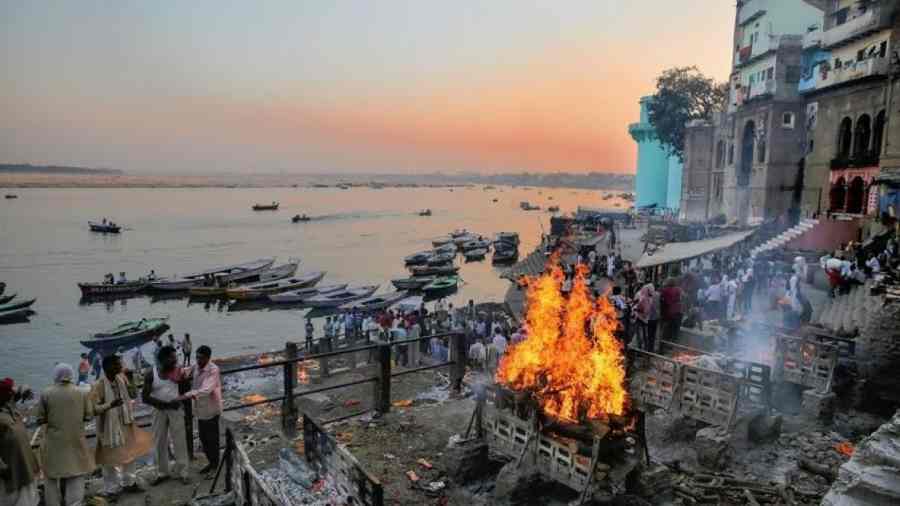DEAD IN BANARAS: ETHNOGRAPHY OF FUNERAL TRAVELLING By Ravi Nandan Singh, Oxford, ₹1,495
This slim volume is about philosophical and anthropological ruminations on death in relation to Banaras. In ethnographic terms, its field comprises multiple locations through which the ‘dead’ traverse: crematoria and burning ghats like Harishchandra, hospital morgue, and the aghorashram (where the dead body is used for sexually-infused spiritual and medicinal purposes). At another level, this is a book about the multiple city that is Banaras: Kashi, Varanasi, Benares (of the British) and Banaras of the ordinary. It also contains some kind of auto-ethnography where the author dispassionately pontificates on the death of his father and vividly describes his funerary journey from a hospital morgue to the cremation ghat in Banaras to a village in Uttar Pradesh’s Ghazipur district. Its pre-eminent focus is on the character of Banaras as a funerary city and the way it has allowed multitudes in its vicinity to orchestrate funeral travelling (shav yatra) as a communitarian act. Expectedly, it examines the mourning resources of North India: Bhojpuri Birha (lamentations), a folk genre of sing-and-tell rendition of death or deathly events. At another level, it is supposedly a work on comparative necrological ethnography of the kin as dead as the author purportedly stages a conversation of pyres by bringing in his field-work-based familiarity of a Danish crematorium.
Yet, at another level, the book is about the author’s self-assured philosophical and anthropological finesse which he demonstrates by bringing in, often in a belaboured way, the names of Gilles Deleuze, A.R. Radcliffe-Brown, Rodney Needham, Emile Durkheim, Robert Hertz, Ludwig Wittgenstein, George Bataille and Veena Das. Interestingly, the book also contains a running commentary on literary and historical works that have been produced on the city of Banaras. Viewed thus, the book turns out to be a post-modernist pastiche, which makes the author proud of his multi-layered narrative but, unfortunately, makes the reader confront an inaccessible and turgid text.
A scholarly reader will get a discerning sense of a "chronology of history, tradition, legend, and the time of before to put together an assemblage of the city multiple through the surface of its names.” Singh’s focus on the affective register “that makes people of the place recognize it as their own history” will be appreciated too. Much like this reviewer, if nothing else, the serious reader would understand the following: “Banaras belongs to the pan Hindu and the non-Hindu. Benares connects the colonial imaginary of the ‘most sacred Hindu city' to a globality of such ‘world-religion’ cities into the present. Varanasi emerges as the scriptural-textual Sanskritic coding of the modern, constitutional and the municipal, nation-state. And all these diverse place-name subjects can be shown inhabiting the same physical city.”
To get a better sense of the nuanced crematorial aesthetics and ethics that the book purports to present through a decade-long mapping of crematorial shifts in contemporary Banaras, the reader needs to be as intellectually evolved as the author. General readers looking for vignettes of everyday life of Banaras are likely to be disappointed. Only a devoted student of the anthropology of death may have the means to read this treatise on death as a social condition in the local moral worlds of Banaras. For the less endowed, there will be no loss if the book goes unnoticed by them.










